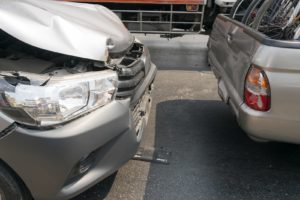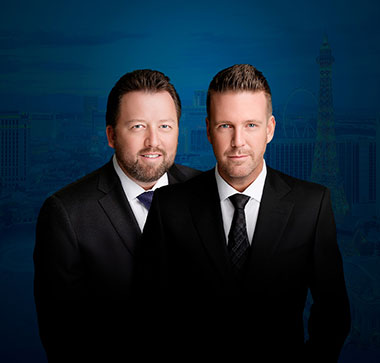Car crashes happen every day, under all kinds of circumstances. No matter how defensively you drive, it is impossible to predict the actions of other drivers and other factors that lead to accidents. The sudden impact of a car crash can leave you shocked and bewildered.
First, you just try to come to grips with what happened, then how and why it happened. Sometimes it is difficult to determine who is at fault in a car accident, but it is an important question. There may be multiple parties involved. Who made a mistake? Was more than one driver negligent? Serious accidents can result in enormous costs, but even minor accidents can be costly because of injuries and vehicle damage. This is where a car accident attorney can help provide you with necessary info to move forward.
Car accidents often involve complex interactions between drivers, vehicles, the road, and other factors. The police report regarding the accident will contain facts that are essential in determining liability. The report will include details such as the date and time of the accident, as well as weather and road conditions.
It will list contact information for those involved and any witnesses. It also usually includes a narrative of events, a diagram, and vehicle damage. However, police reports do not necessarily include a determination of fault. Even if the official police report states who was at fault for a car accident, this does not automatically mean that the person will be held liable for the accident in a lawsuit.

Some types of accidents are more prevalent than others. Here are some scenarios that occur frequently:
Scenario One: Head-on Collisions
A head-on collision occurs when vehicles traveling on the same road, but in opposite directions, crash, often at high speed. These are extremely dangerous accidents, accounting for more than 10 percent of all motor vehicle fatalities. Tragically, statistics show that in a head-on collision, less than half of the vehicle occupants will survive the crash.
Because the front end of the vehicle bears the brunt of the impact, occupants of the larger vehicle usually fare better than the occupants of a smaller, lightweight vehicle. For example, an SUV weighs 3,778 pounds, and a pickup truck weighs 5,217 pounds.
When there is a head-on collision between two vehicles, it means one of the drivers was on the wrong side of the road. The person driving on the wrong side is usually to blame for the crash. One driver may cross the centerline or drive the wrong way on the highway.
Scenario Two: Side-impact Accidents
T-bone accidents are a type of side-impact collision. A t-bone collision is called that because the front of one car hits the middle of another. Another type of side-impact crash is an angle crash, in which one car hits another at an angle. Side impact accidents are the second most fatal type of accident behind only head-on collisions.
Traffic laws are an important factor in these accidents. For example, failing to obey a stop sign or signal, or failing to yield, may cause the accident. Drunk driving or distracted driving can increase the risk of a side-impact accident.
Many side-impact crashes happen at intersections. In a T-bone accident, one vehicle enters the intersection and strikes another driver on the side. These accidents tend to cause the most damage to the occupants on the side of the car that is struck, partly because there is less protection there.
Another type of side-impact crash is an angle crash when another car strikes you at an angle. These may occur in many situations. For example, someone is attempting to merge, or pass, or drifts across lanes. In these accidents, those seated in the rear are usually more vulnerable to injury, partly because safety technology better protects those seated in the front.
Usually, in these crashes, the driver who struck the side of another vehicle is at fault. However, in some cases, both drivers believed they had the right of way. Questions that may help determine liability include:
- Which driver broke the traffic laws? For example, the driver who ignored a stop sign or signal may have entered the intersection after another driver was already in that intersection.
- Were both vehicles moving at the time of the accident? Sometimes a car stalls or is stopped in traffic. If another vehicle strikes it in the side, the car who hit the stationary vehicle usually is liable for the accident.
Scenario Three: Rear-end Accidents

For example:
- If the driver in front backs up and hits the car behind it, the driver in front may be responsible for the accident. Sometimes, a driver backs up without warning, perhaps trying to get out of an intersection.
- On a steep hill, the front driver may also allow the vehicle to move backward before driving forward. If another car is close behind, the driver in front may cause an accident.
- If the driver in front does not have operating taillights, he or she may be liable for the accident. The driver may have put off fixing the taillights, but if he or she stops suddenly, it may contribute to an accident.
Scenario Four: Chain Reaction Car Accidents
A “chain reaction” car crash is an accident where three or more vehicles are involved in a series of collisions, primarily caused by a first single collision. It usually starts with a rear-end accident. The force of the collision pushes the car in front, who then hits the car in front of him, and so on, in a chain reaction. It often happens during traffic stops or on narrow roads, or other circumstances in which the vehicles are close to one another.
When there are multiple cars involved in an accident, it can be difficult to determine who is at fault. In some situations, more than one person may be held responsible. Often the driver who caused the first collision is held responsible. However, others may be at fault, such as:
- A driver who was tailgating
- A driver who was speeding
- A driver who failed to use their brake lights or other signals
- A driver who was texting or distracted while driving
- A driver who was impaired by drugs or alcohol
- An entity that failed to maintain proper traffic signs or signals
Scenario Five: Rollover Car Accidents
Rollovers have a higher fatality rate than any other type of crash. The National Highway Traffic Safety Administration (NHTSA) reports that “rollovers accounted for nearly 35 percent of all deaths from passenger vehicle crashes.” A rollover accident occurs when a vehicle goes out of control and rolls over onto its side or roof.
Many people believe that SUVs are more prone to rollover accidents. While there is some truth to this belief, all vehicles can potentially experience a rollover accident. Rollover accidents often involve a truck, such as a commercial truck. Factors contributing to these accidents include the center of gravity, speed, tripping, and overloading. Uneven pavement or poor road maintenance may also be a rollover hazard.
Common scenarios leading up to a rollover include:
- Impaired or distracted drivers. Drivers who are impaired due to alcohol or drugs, and drivers who are distracted, even by their phones, can cause a rollover. They may drive erratically, wander into other lanes, and cause other drivers to swerve abruptly.
- Speeding. Drivers who are speeding may cut off other vehicles or hit them in the side, causing a rollover.
- Aggressive driving. Driver aggression is shockingly common. Almost 80 percent of drivers said they experienced significant aggression, anger, or road rage in the previous year. Road rage and other types of aggressive driving lead to all kinds of unsafe maneuvers, and can end up causing a rollover accident.
- Drowsy driving. It is hard to establish whether a driver fell asleep behind the wheel. However, drowsy drivers may drift across lanes, drive through stop signs, or fail to yield. The results may cause accidents, including rollovers.
The Long-Term Consequences of Serious Injuries
An accident can happen in seconds. The consequences may last a lifetime. If you have suffered serious injuries, you may need expensive medical care, surgeries, rehabilitation, adaptive equipment, and personal care. Common accident injuries include:
Traumatic brain injury (TBI) – According to the Centers for Disease Control (CDC), a TBI is caused by a “bump, blow, or jolt to the head, or penetrating head injury that disrupts normal brain function.” Vehicle accidents are the second most common cause of traumatic brain injuries and resulted in the largest percentage of TBI-related deaths (31.8 percent). There are four major areas that a TBI can affect:
- Cognitive function (memory, attention)
- Motor function (impaired coordination and balance)
- Senses (vision, hearing, taste)
- Behavior (changes in emotions, signs of aggression/anger)
Spinal cord injury – According to the National Spinal Cord Injury Statistical Center (NSCIS), car accidents are a leading cause of spinal cord injuries. Injuries to the spinal cord usually are the most devastating of all spinal injuries. Even doctors can mend the spine, they may be unable to repair nerve damage in the spinal cord. Therefore, victims need extensive, long-term medical treatment and assistance. The NSCIS estimates costs from a spinal cord injury in the millions of dollars.
Broken bones – The impact of a car crash may break one or more of your bones. As a result, you may need surgery, as well as physical and occupational therapy to regain use of your legs and arms.
Neck and back injuries – Whiplash is a common injury, especially following a rear-end collision. Other injuries can affect the bones and discs in your back, resulting in pain and disability.
Statute of Limitations
A statute of limitations is a state law that sets a strict time limit on a plaintiff’s right to file a civil case in court. In Nevada, the statute of limitations for most personal injury lawsuits is two years (three years for property damage claims).
What to Do Immediately After a Car Accident
- Seek medical attention. The most important step after a car accident is to check on yourself and everyone else involved. You should always seek medical attention. Sometimes symptoms do not appear for days or even weeks following the accident. Internal injuries and traumatic brain injuries may not be visible, but they are extremely dangerous.
- Gather information. Provide as much information as you can to law enforcement officers. Answer their questions simply and honestly, but if you do not know, say so. If possible, collect contact information from those involved and any possible witnesses. Take pictures of the cars, your injuries, and the accident scene, including debris and the surrounding area. Do not post information about your accident on social media.
- Beware of insurance company representatives. Insurance company representatives may request a statement or offer you a quick settlement. No matter how tempting it may be just to accept the offer, do not sign anything or discuss the accident with insurance representatives. Refer them to your attorney.
- Do not admit fault. Never admit fault following a car accident. In a lawsuit, the opposing party may use such statements against you. Wait and allow the investigation to proceed. Depending on the facts, you may be entitled to compensation for damages such as medical bills, lost wages, and physical and emotional pain.
If you or someone you love was injured in a car accident, an experienced car accident attorney can investigate the facts of your case, explain your legal options, and guide you through the process.
Benson & Bingham Accident Injury Lawyers, LLC
626 S 10th St
Las Vegas, NV 89101
702-382-9797


